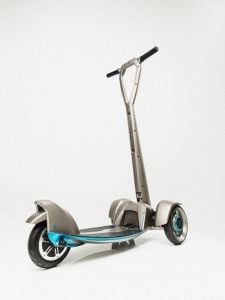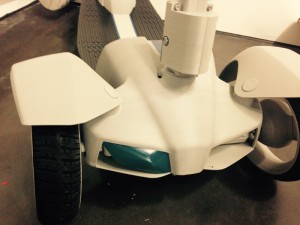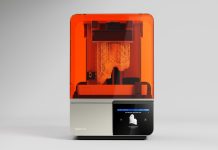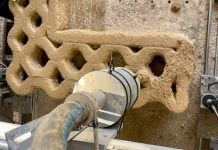Thanks to Stratasys, a German start-up called Floatility GmbH has managed to develop a working prototype of a smart electric scooter that is simple and brilliant.

The “e-floater” is a three wheeled electric scooter that allows users to ride effortlessly while standing.
It might look and resemble a Segway in many ways, but this scooter is quite different. First and foremost it is solar-powered and has on-board batteries that take about only two hours to charge.
It also has a 250 watt motor that will allow you to travel about 15 kilometres and the whole scooter weighs only 26 pounds.
What’s most interesting about this “floating” scooter is that it is mostly 3D printed.
“The need to build prototypes that exactly resembled the final product and that would enable us to test everything thoroughly was vital to the successful launch of this product,” said Oliver Risse, Floatility’s founder.
“3D printing was essential in this regard as it allowed the team to physically test the design and concept of e-floater as if it were the final product. This not only sped up the product development cycle, but dramatically reduced our product development costs. We would have not been able to take this product from concept to launch without using Stratasys 3D printing solutions to develop a working prototype – it’s as simple as that.”

The so-called “soft” components of the scooter like wheels, grips and lights were 3D printed using Stratasys’Objet500 Connex3 Colour Multi material 3D printer, while the other parts were made using the Stratasys Fortus 450 3D Production System.
The team turned to 3D printing as the “wiser” choice, the other being silicon moulding.
“This was not ideal for a number of reasons. Not only would it have entailed an assembly of up to 20 parts, but the costs would have been significantly higher and the production time would have been double to that achievable with 3D printing,” said Risse.
“The e-floater is a perfect example of how 3D printing enables designers and inventors to turn their concepts into fully-operational products quickly and cost-effectively. In this case, the blend of both our core 3D printing technologies proved instrumental in bringing another exciting and innovative product to market and, as a company, we’re delighted to play a part in helping Floatility – and other start-up businesses like them – bring their ideas to products,” added Andy Middleton, President, Stratasys, EMEA.


















